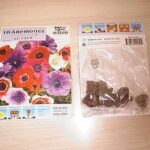Ah, the myriad of anemones species that are found in our natural reef environments eventually finding their way into our pet shops. Ranging in size, color, tentacle number and shape as well as ease of maintaining for any period of time in a captive environment. Running the gamut in terms of their vivid coloration and spectacle in the company of any number of amphiprionine species of fish(clown/anemone fish) is truly a priceless gift to anyone that appreciates the under sea world. The Sebae Anemone can be associated with a variety of anemones as is often the case in the reef industry with heteractis sebae, malu and crispa being collectively considered as one in the same. This anemone represents a lustrous splash of color and diversity for a reef or other marine biotope aquarium.
As with the many other suitable anemones that may be employed in a saltwater aquarium, the collection, shipping and handling processes are crucial and often times carelessly neglected, leading to the demise of the anemone before it even makes its way into your aquarium. These techniques are so pertinent to the success of any anemone that if any of these are not carried out properly, it for all intent and purposes is doomed. If the anemone has successfully made it through the transition from ocean to your tank in the most efficient and effective means possible, your anemone will have a good chance of thriving in your aquarium. Of course, the anemone isn’t out of the woods yet, as water parameters, lighting, time and patience need to be dedicated to your tank and inhabitants as well. Sebae anemones are no exception and will surely die, if these conditions and suitable human intervention are not met hand in hand.
Sebae anemones are mainly from the Indian Ocean and live in the shallower regions of reefs, where sand, mud and macroalgae are prominent. Sebae anemones require a deep sandy area in which to gain a strong foothold and attach itself. Once it finds an ideal location that offers it the right mix of light and water flow, the sebae anemone will make its permanent residence there.
The so called delicate anemone as sebae’s are sometimes called, come in various colors with the most common being tan, pink, red, cream, yellow and white. These anemones sometimes will have a magenta or yellow-green color to the tips of the anemone which makes them a highly colorful, unusual and popular anemone in the reef hobby. Like some of the other species of stichodactyla(carpet anemones), dyes can sometimes be used by wholesalers, dealers and others to try to increase the saleability of these anemones. This is a negative feat by highly irresponsible people trying to make a buck the wrong way as the anemone will most likely die due to this unnatural process that the anemones can’t overcome very often. Typically these anemones will be dyed yellow or pink and an easy way to differentiate the dyed from the natural colored sebae anemone is if the tentacles are a different color than the base, it is a natural colored specimen. The tan species of sebae anemone tends to be the most hardy for some reason, maybe due to the zooxanthellae population in its tissue.
Some of the most important requirements for maintaining a sebae anemone are a temperature between 72 and 78 degrees, a pH of 8.2-8.4, intense lighting(metal halides are BEST), moderate water flow, specific gravity around 1.023 and clean water meaning water changes performed weekly and carbon addition. The acclimation process is crucial to getting a sebae anemone off on the right foot and the stability of your water parameters will help to ensure its success in a marine aquarium.
Feeding of these, or any other species of anemone, is not a “must do” proposition for the overall health of maintaining a sebae anemone in a captive environment. Many aquarists have the supreme notion that they have to feed their anemone shrimp, krill, silversides, clam or other proteinaceous foods every other day, or weekly to ensure its health. This urban legend of sorts can’t be any further from the truth! Anemones contain zooxanthellae that resides in the tissue of anemones that provides the nutrients they require. They also will absorb nutrients from the water as well, so unless your anemone is shrinking in size, their is a point of over feeding. If you must feed a sebae or any other species of anemone, feed once a week or so and you should be able to sleep better knowing that your place here on earth has been achieved and conquered by our ability to target feed your anemone.
As far as the ease of maintaining a sebae anemone in captivity, their are other better suited species for novice and expert aquarists. The condy, flower/rock anemone, and even the bubble tip and pacific long tentacle anemones will make a nice impact on a marine aquarium, however, with the ease of purchasing a sebae anemones combined with the fact that they offer a stunning appearance especially in the presence of a variety of clown fish to call the anemone home, it is worth the added risk to incorporate a H. malu, H. sebae or H. crispa into your diverse and wonderful marine aquarium. It is a great idea to read about husbandry and compatibility requirements before jumping into a purchase of a sea anemone or other livestock for that matter to afford you the best success and that of your prized collection of marine life.


